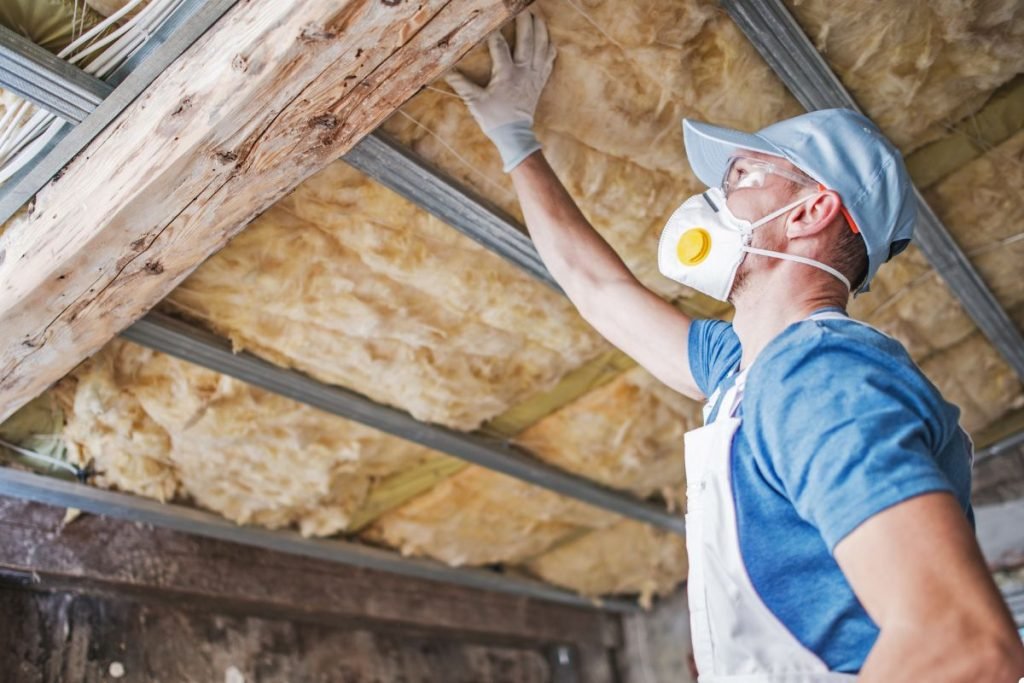
Are you looking to lower your energy bills, make your home more comfortable, and potentially increase its value? Blown-in insulation could be the answer! This comprehensive guide will walk you through everything you need to know about blown-in insulation, from understanding what it is and the different types available to its benefits, installation process, and how to choose the right contractor. By the end of this article, you’ll be well-equipped to decide if blown-in insulation is right for your US home and understand how to achieve those sought-after energy savings. Call us today to learn more and get a free estimate!
Introduction to Blown-In Insulation
Imagine a home that stays warmer in the winter and cooler in the summer, without you constantly adjusting the thermostat. That’s the promise of proper insulation, and blown-in insulation offers an effective and versatile solution. Many US homes suffer from inadequate insulation, leading to drafts, inconsistent temperatures, and sky-high energy bills. Blown-in insulation addresses these issues by filling gaps and crevices, creating a thermal barrier that significantly improves energy efficiency.
What is Blown-In Insulation?
Blown-in insulation, also known as loose-fill insulation, is a type of insulation material that’s applied using a specialized blowing machine. This machine blows the insulation into attics, walls, and other areas, filling the space completely and creating a consistent thermal barrier. Unlike rolled or batt insulation, blown-in insulation conforms to the shape of the space, making it ideal for irregular areas and hard-to-reach spots. This versatility makes it a popular choice for both new construction and retrofitting existing homes. Improve your property’s insulation with our services, designed to provide seamless coverage using high-quality loose-fill materials.

Types of Blown-In Insulation Materials
There are three main types of materials used for blown-in insulation: fiberglass, cellulose, and rockwool (mineral wool). Each has its own unique properties, advantages, and disadvantages.
Fiberglass Blown-In Insulation
Fiberglass is a popular and cost-effective option made from recycled glass. It’s fire-resistant and offers good thermal performance. However, it can be irritating to the skin and respiratory system during fiberglass installation, requiring proper safety precautions. The R-value (resistance to heat flow) of fiberglass blown-in insulation typically ranges from R-2.2 to R-2.9 per inch.
Cellulose Blown-In Insulation
Cellulose is made from recycled paper products and treated with fire retardants. It’s an environmentally friendly option that provides excellent thermal and acoustic performance. Cellulose can settle over time, potentially reducing its R-value. It also requires careful installation to prevent moisture issues. The R-value of cellulose blown-in insulation typically ranges from R-3.1 to R-3.7 per inch.
Rockwool Blown-In Insulation
Rockwool, also known as mineral wool, is made from volcanic rock or recycled steel slag. It’s fire-resistant, water-resistant, and offers excellent thermal and acoustic performance. Rockwool is also resistant to mold and pests. It tends to be more expensive than fiberglass and cellulose. The R-value of rockwool blown-in insulation typically ranges from R-3.0 to R-3.3 per inch.
Benefits of Blown-In Insulation for US Homes
Blown-in insulation offers a wide range of benefits for US homeowners:
- Energy Savings: By reducing heat loss in the winter and heat gain in the summer, blown-in insulation can significantly lower your energy bills.
- Improved Comfort: Proper insulation creates a more consistent temperature throughout your home, eliminating drafts and cold spots.
- Noise Reduction: Blown-in insulation can help to dampen sound from outside and between rooms, creating a quieter and more peaceful living environment.
- Environmental Benefits: Using recycled materials like cellulose and reducing energy consumption helps to lower your carbon footprint.
- Increased Home Value: Improving your home’s energy efficiency can make it more attractive to potential buyers and increase its overall value.
- Versatility: Blown-in insulation can be installed in tricky locations such as around piping and wiring.
Where Can Blown-In Insulation Be Installed?
Blown-in insulation is a versatile solution that can be used in various areas of your home to improve energy efficiency and comfort:
Attic Insulation
Attics are a prime location for heat loss in the winter and heat gain in the summer. Adding blown-in insulation to your attic can significantly reduce energy bills and make your home more comfortable.
Wall Insulation
Blown-in insulation can be installed in wall cavities to improve energy efficiency and reduce noise transmission. This is especially beneficial for older homes with inadequate wall insulation.
Crawl Space Insulation
Insulating your crawl space with blown-in insulation can help to prevent moisture problems, reduce drafts, and improve the overall comfort of your home.
The Blown-In Insulation Installation Process
The blown-in insulation installation process typically involves the following steps:
- Inspection: A professional will inspect your home to assess your insulation needs and recommend the appropriate type and amount of insulation.
- Preparation: The area to be insulated will be prepared by sealing any air leaks and ensuring proper ventilation.
- Installation: The insulation material is blown into the designated areas using a specialized blowing machine.
- Cleanup: The work area is cleaned up, and any debris is removed.
While DIY blown-in insulation kits are available, it’s generally recommended to hire a professional contractor for the best results. Professionals have the experience, equipment, and expertise to ensure that the insulation is installed correctly and safely.
Cost of Blown-In Insulation in the USA
The cost of blown-in insulation in the USA varies depending on several factors, including:
- Type of Material: Fiberglass is typically the least expensive, followed by cellulose and rockwool.
- R-Value: Higher R-values require more insulation, which increases the cost.
- Size of the Area: The larger the area to be insulated, the higher the cost.
- Labor Costs: Installation costs vary depending on the contractor and the complexity of the job.
How to Choose the Right Blown-In Insulation Contractor
Choosing the right contractor is crucial for a successful blown-in insulation project. Here are some tips to help you find a reputable and qualified contractor:
- Check Licenses and Insurance: Make sure the contractor is licensed and insured to protect yourself from liability.
- Get Multiple Quotes: Compare prices and services from at least three different contractors.
- Read Reviews and Testimonials: Check online reviews and ask for references from past customers.
- Ask About Experience: Choose a contractor with extensive experience in blown-in insulation installation.
- Verify Certifications: Check with insulation manufacturers and industry organization to verify your contractor holds proper certifications.
Potential Problems and How to Avoid Them
While blown-in insulation is a great option, there are some potential problems to be aware of:
- Settling: Cellulose insulation can settle over time, reducing its R-value. Proper installation and choosing a high-quality material can minimize settling.
- Moisture Issues: Improper installation or ventilation can lead to moisture buildup in the insulation, which can cause mold and reduce its effectiveness.
- Air Leaks: If air leaks are not properly sealed before installation, the insulation will not be as effective.
To avoid these problems, it’s essential to hire a qualified contractor who understands the proper installation techniques and can identify and address any potential issues.

Blown-In Insulation vs. Other Types of Insulation
Blown-in insulation is just one of many insulation options available. Here’s a brief comparison to other common types:
- Batt Insulation: Batt insulation is pre-cut fiberglass or rockwool that’s installed between studs or joists. It’s relatively easy to install but may not fill gaps as effectively as blown-in insulation.
- Spray Foam Insulation: Spray foam insulation is a liquid that expands and hardens to fill gaps and crevices. It offers excellent thermal performance but is more expensive than blown-in insulation.
- Rigid Foam Boards: Rigid foam boards are typically used for insulating walls and foundations. They offer good thermal performance but are not as versatile as blown-in insulation for filling irregular spaces.
Frequently Asked Questions (FAQs) About Blown-In Insulation
How long does blown-in insulation last?
Is blown-in insulation safe?
Yes, when installed properly, blown-in insulation is safe. However, it’s important to take precautions during installation to avoid inhaling dust or fibers.
Can I install blown-in insulation myself?
While DIY kits are available, it’s generally recommended to hire a professional for the best results and to ensure safety.
Does blown-in insulation help with noise reduction?
Yes, blown-in insulation can help to dampen sound and reduce noise transmission.
How do I know if I need more insulation?
If you experience drafts, inconsistent temperatures, or high energy bills, it’s a sign that you may need more insulation. A professional energy audit can help you assess your insulation needs.
Conclusion
Blown-in insulation is a smart investment for US homeowners looking to improve energy efficiency, increase comfort, and reduce their carbon footprint. By understanding the different types of materials, benefits, installation process, and potential problems, you can make an informed decision and choose the right solution for your home. Don’t wait any longer to start saving money and enjoying a more comfortable home. Contact a qualified blown-in insulation contractor today!
